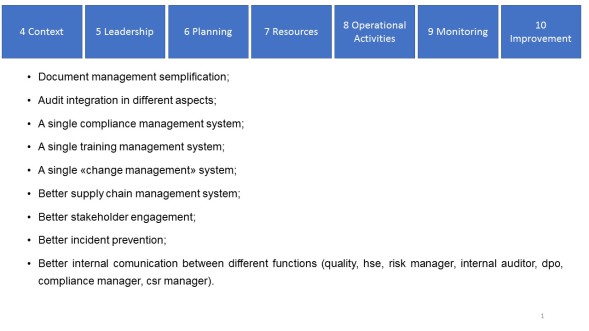ISO INTEGRATED MANAGEMENT SYSTEM
System integration is a fundamental aspect for not having redundancies and management inefficiencies. The new ISO standards based on a single common structure, the High Level Structure, helps the system integration.
The implementation of a single management system ensures a better control over all key KPIs (key performance indicators) and improved document management. Flexibility and modularity is the basis of
an integrated management system that maintains the organization sustainability over time as a key objective.
The recent revision of ISO 9001 and other standards such as ISO 14001 based on HLS and risk management help to map the business model of the company and to put in practice a change management model towards the sustainability based on some important steps:
- Identify rilevant issues and stakeholders;
- Analyse the internal and external context;
- Define and integrate Vision, Mission, Policy and Strategy;
- Analyse opportunities and risks;
- Define a resource allocation plan and a Governance structure for the development of sustainability in the company;
- Define a system of Key Performance Indicators and a dashboard to monitor and improve the "Sustainability Oriented" management system of the company.
Some advantages of an integrated management system based on ISO High Level Structure:


